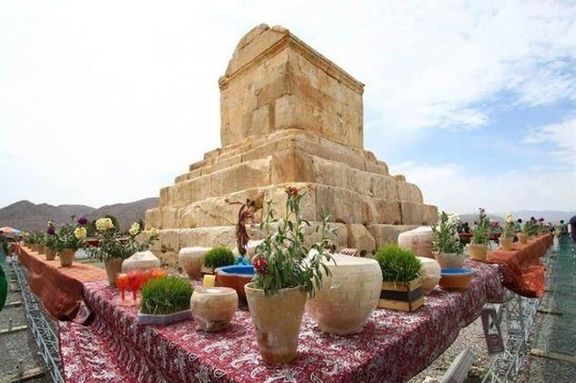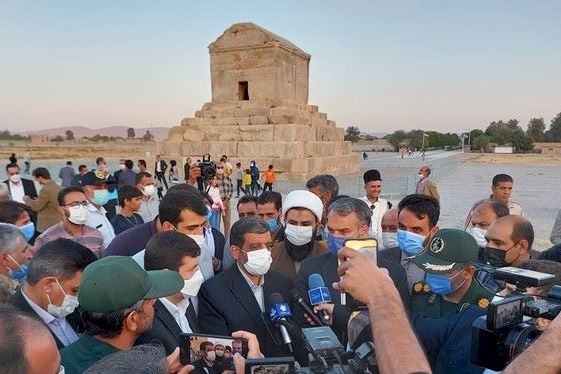Iran Minister Rules Out Digging Wells Near Cyrus Tomb

Iran's cultural heritage minister, denied Sunday there was any plan to dig agricultural wells near the tomb of Cyrus the Great in the ancient Achaemenid site, Pasargadae.

Iran's cultural heritage minister, denied Sunday there was any plan to dig agricultural wells near the tomb of Cyrus the Great in the ancient Achaemenid site, Pasargadae.
Ezzatollah Zarghami told reporters on the sidelines of an exhibition that the government wanted to address farmers’ problems but would not allow wells near the historic monument dating from the 6th-century BC. Zarghami said he had been misunderstood by critics since he said last week, on a visit to the Unesco World Heritage site of Pasargadae, that that the issuing of well permits needed to be reviewed, given problems of irrigating land.
"Zarghami has backtracked and denied his previous remarks about agriculture in Pasargadae and like other authorities has claimed that his remarks were distorted,” the reformist Aftab-e Yazd newspaper said Sunday.
Etemad newspaper wrote in a commentary Sunday that studies had shown “the only way to save Pasargadae is to shut down wells,” while the minister had defended the “extraction of water within the limits of historical monuments instead of worrying about…wells and limitless water extraction."

President Ebrahim Raisi (Raeesi) last week visited the ruins at Persepolis, the ceremonial capital of the Achaemenid Empire close to Pasargadae. Raisi said the palace complex was both a relic of Iranian art and "a message to oppressors to behold the fate of those who oppress the people."
Raisi critics have slammed the idea that the Achaemenids were "oppressors" and accused the president of undermining national identity. Persepolis and Pasargadae were both destroyed by Alexander the Great after the Achaemenid empire collapsed to the Greeks, Macedonians and their allies in 330 BC, some 200 years after the empire was founded in the 6th century BC by Cyrus.
The Achaemenid empire, which was strictly hierarchical and covered a variety of ethnic groups under the Persians, is minimally represented in school history books in Iran.Persepolis was a “dynastic, perhaps ritual, center,” wrote historian Richard Frye, where the priestly caste was influenced by the teachings of Zoroaster.
“Raisi and Zarghami's remarks showed they have no knowledge of and no interest in Iran's ancient history,” Morteza Kazemian, Iran International analyst, said Sunday. "They don't relate to that history and the symbols of Iranian identity in any way."
Esmail Kahrom, an environmentalist known internationally for his jointly edited book The Lion and the Gazelle, has warned that Cyrus tomb could sink into land holes caused by water extraction 40 years from now if agriculture expands. Kahrom, a former adviser to the head of the department of environment, has argued the local economy should rely on expanding tourism.
Kahrom has drawn a comparison to the historic Khajou Bridge in Esfahan, where the transfer of water from Zayandeh Roud to other provinces, and for use in agriculture and industry, has dried up the river over 20 years and led to cracks in the surrounding groundand the bridge’s structure.
There is also land subsidence at Esfahan’s airport, historic monuments, and residential and commercial buildings. Experts say Iran has under ten years to deal with land subsidence.